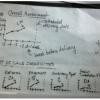People & Teams
Articles
|
Dealing with Troublesome People Have you ever had to contend with a demanding developer? A testy tester? A cantankerous customer? Why oh why do people act that way? Rather than wondering why they act that way, it can be helpful to consider the circumstances that might account for their behavior. |
||
|
|
Harvesting Stakeholder Perspectives to Organize Your Backlog When Mary Gorman and Ellen Gottesdiener facilitated a game called The Backlog Is in the Eye of the Beholder for the Boston chapter of the International Institute of Business Analysis, both the players and the facilitators learned some important lessons in organizing a project requirements backlog. In this article, they describe the game and what it revealed, including the value of truly knowing your stakeholders. |
|
|
A Psychology Framework That Will Help You Implement CM Practices How does personality impact the implementation of industry Standards and Frameworks? It would seem that following the guidance in the IEEE 828 CM Planning standard is simply a matter of writing CM Plans and documenting your existing CM practices. The fact is that some people implement Standards and Frameworks successfully and others fail miserably. This article presents a popular and highly regarded psychology framework that will help you better understand how to implement Configuration Management. |
||
|
The Shape of Change on Agile Teams Many times, Scrum Masters and agile coaches are confronted with the need to change a team that seems to be stuck in its own behavior. And though team members may be willing to change, they just can’t seem to get out of their current situation. The author sheds a new light on this difficult problem and proposes to change the environment instead of the team. |
||
|
Thoughts from Mid-Project My team is in the middle of one of the hardest projects—we call them "themes"—we’ve ever tackled. We’re a high-functioning agile team that has helped our company grow and succeed over several years now—we “went agile” in 2003. Here’s one thing I know for sure: No matter how many problems you solve, new challenges will pop up. |
||
|
How to Resolve Disputes So Everyone Wins It's a special skill to be able to terminate disputes amicably. In this week's column, Naomi Karten offers suggestions for how to resolve disputes so that none of the parties suffers from black eyes or bruised egos. |
||
|
Four Frequent Feedback-Gathering Flaws Giving your customers the opportunity to provide feedback is great, but only if you don't fall into one of the four traps that Naomi Karten describes in this article. Let your customers know that not only do you want their feedback, but that you'll actually use the important info they give you. |
||
|
How to Align Your Team with the Scrum Model A successful Scrum implementation requires proper understanding of Scrum processes within team and within all project stakeholders. Even after proper training and certification (CSM/CSPO) it’s really tough to achieve the success as intended. There is one common and important problem which has always been overlooked: the alignment of current team with Scrum the model. Because, vanilla-Scrum only describe what the role does in the process. |
Vinay Krishna
November 9, 2010 |
|
|
Warning: No News is Not Always Good News When your customers aren't complaining about the services you provide, it's easy to assume you have happy customers. But that could be a serious mistake. In this week's column, Naomi Karten describes what happened in two organizations that misinterpreted the absence of customer complaints. |
||
 |
Ready to Ship? On the surface, a Broadway musical, a newspaper, and software may not seem to have much—if anything—in common, but they have one common thread. All are delivered on a fixed schedule. But of the three, software tends to stray the most from the fixed schedule. In this week's column, Jeff Patton says that by focusing on the readiness of the entire product—as done in theatrical performances and when publishing a newspaper—and not just on the completion of the planned bits of work, you can produce software on a fixed schedule that you know is ready to ship. |








